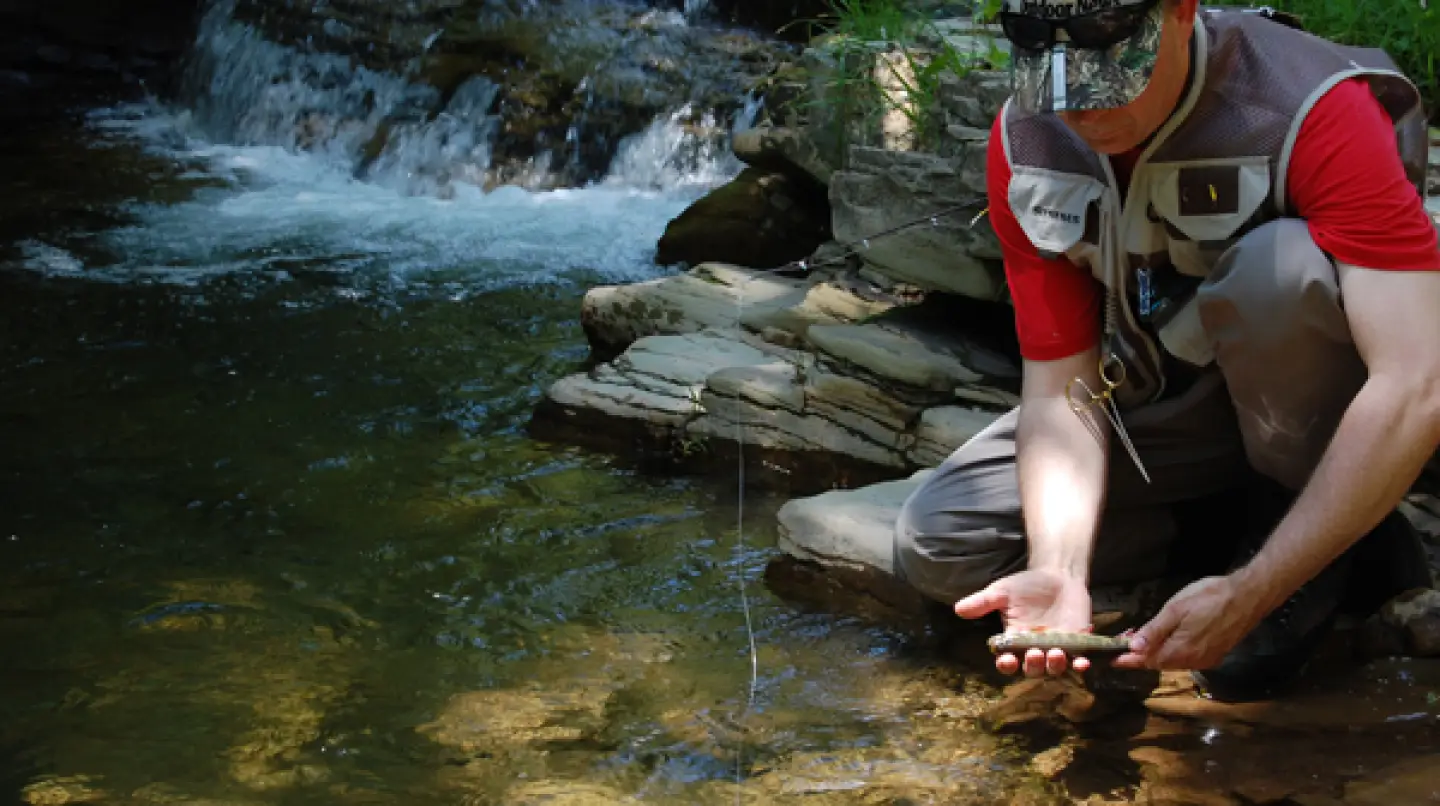It's inevitable. Every summer we get one or two of those scorchers – highs into the 90s and the humidity registering off the scale (or so it seems).
Now, imagine being a fish.
No, they don't have to worry about the humidity, but think about trying to drink a warm beer on a hot day. Now you're getting the idea – a trout's summer life.
Being a coldwater species, trout thrive in water temps that would make us shiver if we stood in them for very long. But those temperatures– optimum for a brookie is 58 degrees, a little higher at for a rainbow (up to61 degrees) and higher still for a brown trout, anywhere from 56-65 degrees –can be hard to find in some of our streams in the summer. Without the constant influx of cold water, as is the case on tailwater streams such as the Delaware River, trout will seek cooler waters in the summer and can become fairly sluggish. Too, as the water warms, the dissolved oxygen level drops, so not only are the trout looking for cooler water, but they'll also be searching out riffles and waterfalls or rapids for that extra air.
That's when Steve and I head to for the hills. The nativetrout streams of our area offer refuge for not only the brookies on a hot day,but anglers as well, looking for a refreshing break from the sun's heat.
These streams, many unmarked and mere trickles to start, are the perfect hangout for the summer. Shaded by the dense forest canopy and a good hike from the nearest road, they offer solitude for both fishermen and fish. But remember that the resource is fragile. While we have several stops on our summer brookie fishing tour, we'll hit one only once a year and, as usual,it's all catch and release. It's tough enough being a fish in those conditions;we don't need to be stressing them out every week by going in and catching them over and over again – or, worse, keeping them. First of all, they aren't big enough to do anything with. These aren't the state record fish that end up on the wall, but you'd be surprised at the fight a 5- to 6-incher can put up when you're pulling it out of a pool the size of your dinnerplate on a 3-weight fly rod.
The summer's long-term forecast doesn't look too bad for the trout, as long as we can maintain good flows on the rivers and keep the overnights relatively cool. Let's hope we don't see a repeat of a couple of years ago when water temperatures on area streams shot in to the mid-70s,forcing local guides to steer people away from the streams. Luckily for those fishermen, the Adirondacks are blessed with an enviable pond and lake fishery and they didn't skip a beat in terms of landing fish.
So how hot is too hot?
First, make sure you have a thermometer with you. A digital one is best because, really, one degree is important when you're talking trout.This isn't something that you can guess.
Tons of studies will tell you that there is a threshold limit for trout species, but that's not the number you should be keying in on.While a rainbow trout may be able to live in 77-degree water, chances are it's not doing well and even catch-and-release would likely lead to the death of the fish.
Summer fishing is usually limited to very early morning before the sun has a chance to beat down on the stream. My go-home temperature is 68 degrees. When we're knocking on that number, I'll put the stream rod away and maybe head to another water, an area lake, for some smallmouth action.There's absolutely no reason to stress the fish anymore than they already are.How would you like it if someone handed you a warm beer on a hot day?
